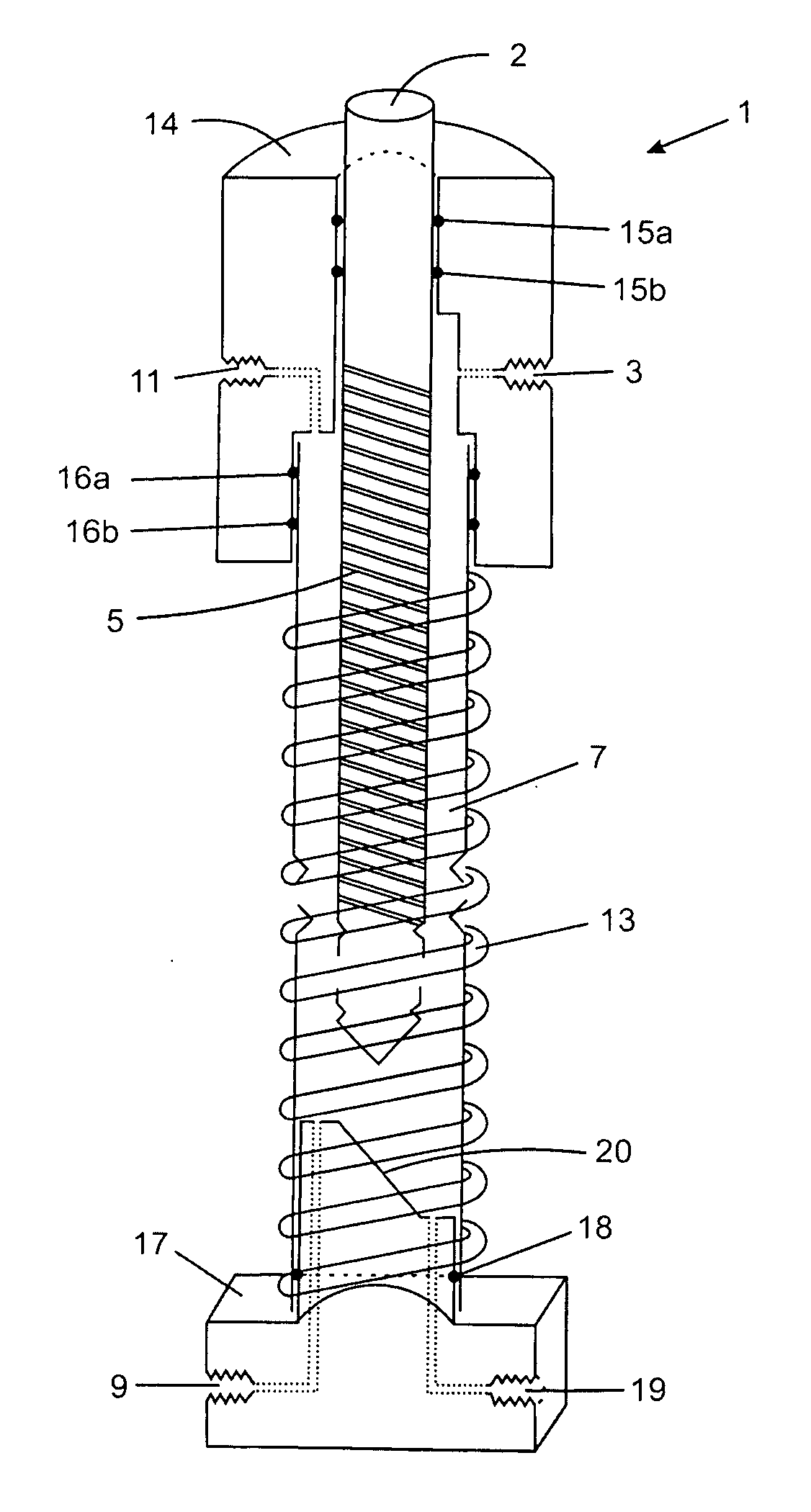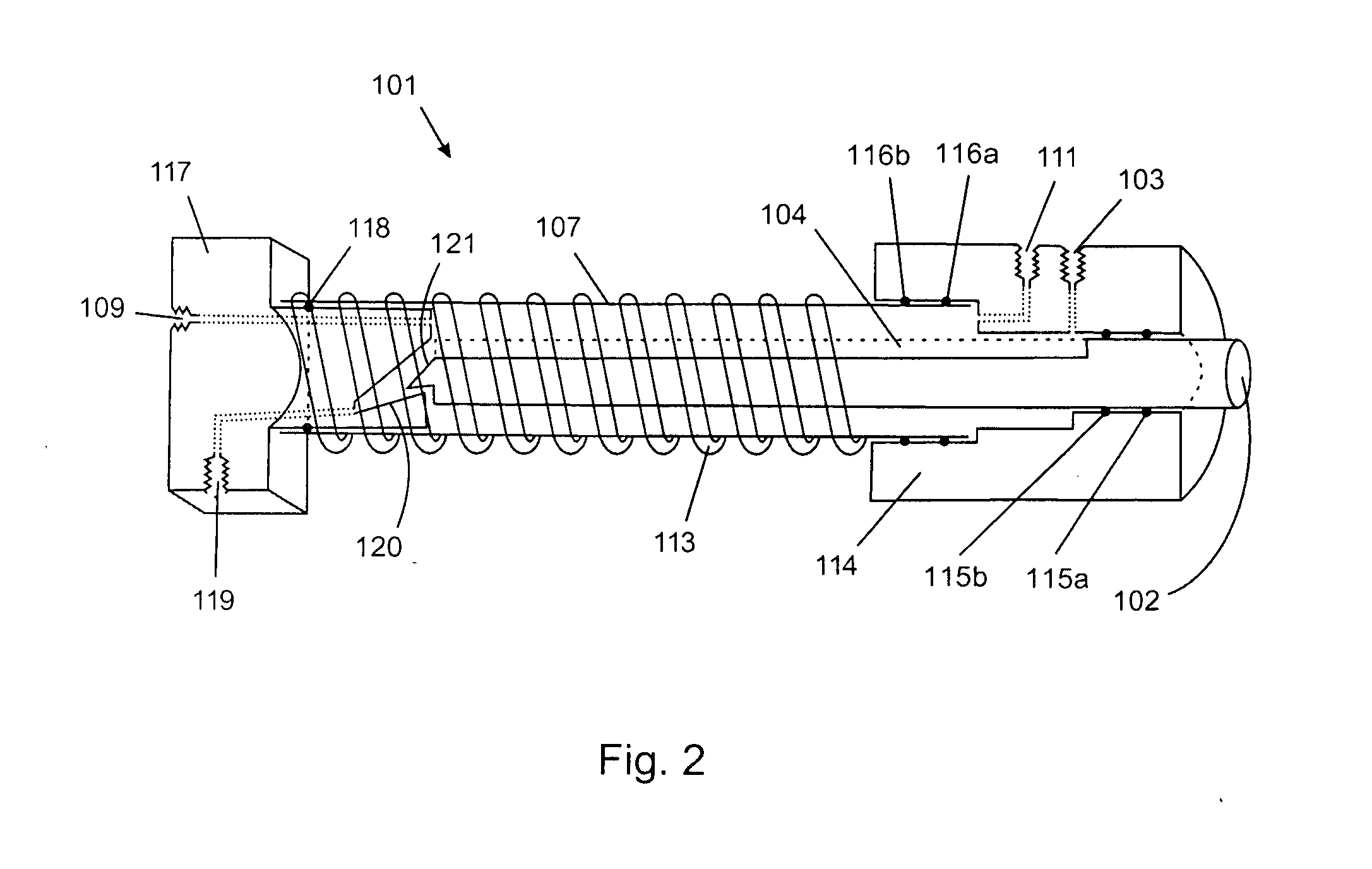Thin-film photochemical vapour generation
a thin film, photochemical technology, applied in the direction of evaporation, separation process, instruments, etc., can solve the problems of reducing the efficiency of vapour generation, wasting samples, and limiting the use of semi-metals and mercury, so as to reduce the effect of extraneous absorption, enhance irradiation times, and high efficiency
- Summary
- Abstract
- Description
- Claims
- Application Information
AI Technical Summary
Benefits of technology
Problems solved by technology
Method used
Image
Examples
example 1
Thin-Film Photochemical Vapour Generator
[0041]FIG. 1 provides a schematic drawing of a first embodiment of a thin-film photochemical vapour generator of the present invention in vertical orientation. With reference to FIG. 1, the thin-film photochemical vapour generator 1 integrates both vapour generation and gas-liquid separation functions utilizing a 6 mm o.d. vertical central quartz rod 2 onto which a liquid sample containing a precursor compound of an analyte is pumped through sample inlet 3 to yield a thin liquid film on the surface of the rod. The surface of the rod is fashioned into a screw design 5 to increase surface area of the rod in order to perturb what would otherwise be an unencumbered flow of liquid down a smooth surface under the influence of gravity, thereby enhancing sample residence time in the generator. The thin liquid flow facilitates rapid escape of any generated volatile species from the condensed phase. The rod is housed within a concentric 13 mm o.d. quart...
example 2
Sample Analysis Using TF-PVG
Procedure
[0047]Once the Ar plasma and the UV lamp of the TF-PVG of Example 1 are stabilized, the PVG generator is brought on-line and volatile species are generated when analyte standard solutions containing formic or acetic acid at varying concentrations are delivered to the TF-PVG. Gaseous products, simultaneously separated from the liquid phase within the generator, are flushed by the Ar carrier gas to the ICP torch for optical emission measurements. All experimental conditions are optimized for maximum response for each analyte. A blank is measured before each run using solutions containing only sub-boiling distilled LMW acids (ammonia and the LMW organic acid in the case of iron). No blank signal is generally detected; however, it is noteworthy that analytical grade formic acid produces a very high blank for iron and nickel before purification.
[0048]Test samples of nominal 0.25 g of CRMs DORM-3 and DOLT-4 are weighed into Teflon™ digestion vessels (C...
PUM
| Property | Measurement | Unit |
|---|---|---|
| internal volume | aaaaa | aaaaa |
| length | aaaaa | aaaaa |
| length | aaaaa | aaaaa |
Abstract
Description
Claims
Application Information
 Login to View More
Login to View More - R&D
- Intellectual Property
- Life Sciences
- Materials
- Tech Scout
- Unparalleled Data Quality
- Higher Quality Content
- 60% Fewer Hallucinations
Browse by: Latest US Patents, China's latest patents, Technical Efficacy Thesaurus, Application Domain, Technology Topic, Popular Technical Reports.
© 2025 PatSnap. All rights reserved.Legal|Privacy policy|Modern Slavery Act Transparency Statement|Sitemap|About US| Contact US: help@patsnap.com



